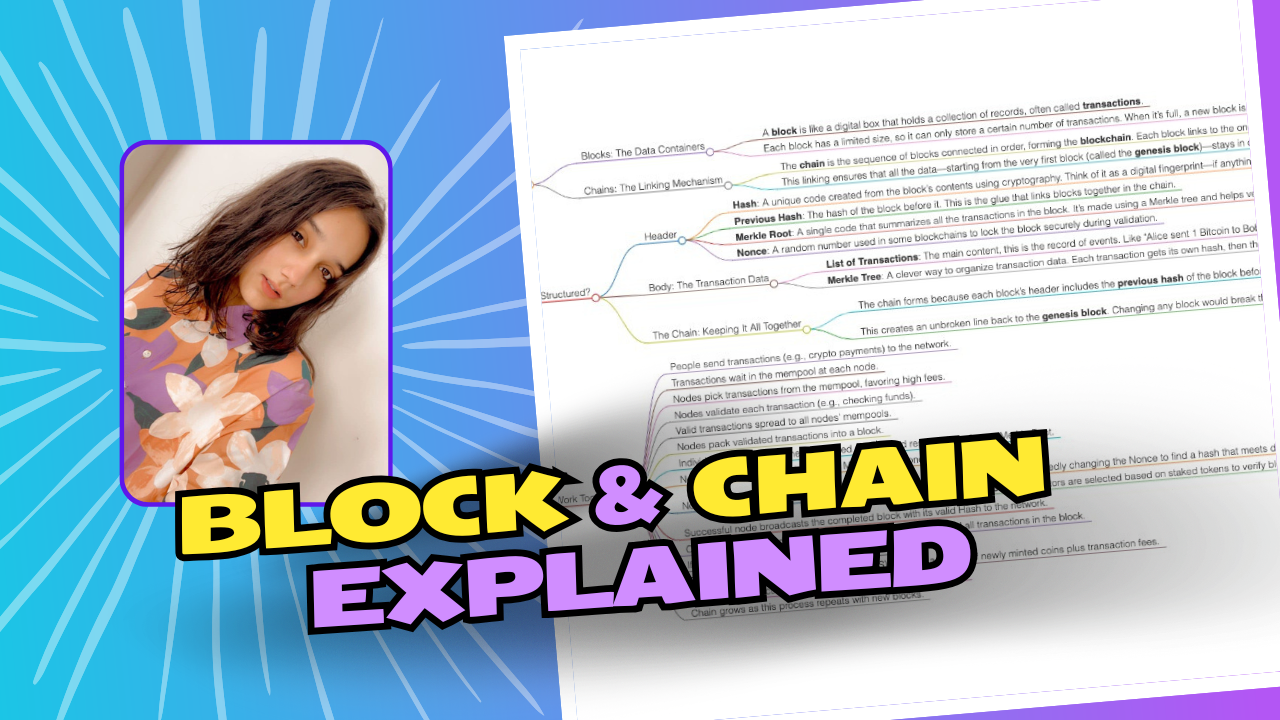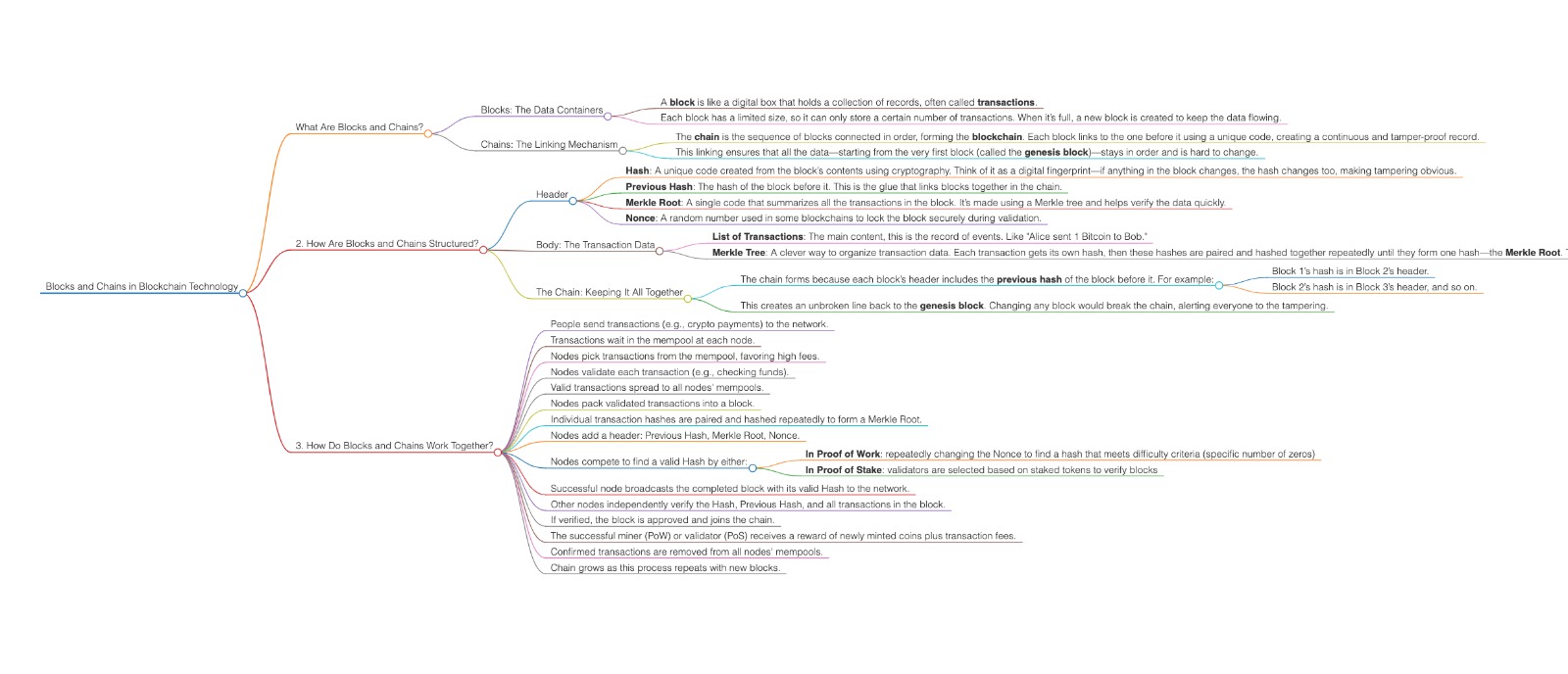Understanding Block & Chain in Blockchain
 Disha Jain
Disha Jain
As a blockchain educator who's spent years breaking down complex concepts for newcomers and experts alike, I've found that the power of blockchain lies in understanding its foundational elements—blocks and chains. Let's dive into what these components really mean.

The Block ( More Than Just a Data Container )
In my years of understanding blockchain fundamentals, I've come to view blocks not simply as data structures but as moments frozen in time. A block is essentially a snapshot of verified transactions that have been bundled together.
Each block contains:
A collection of transactions that have been verified by the network's participants
A timestamp that permanently marks when this collection was created
A unique fingerprint (hash) that identifies this specific block
A reference to the previous block's fingerprint (the previous hash)
Nonce
Merkle tree
Merkle root
Think of each block as a page in your family's financial journal. Once you've recorded all transactions for the day—the money spent on groceries, bills paid, income received—you date it, sign it, and reference yesterday's page. Once written, it becomes a permanent record that shouldn't be altered.
The Chain
The "chain" in blockchain is what transforms individual blocks from isolated data containers into a cohesive, tamper-resistant system. This connection creates the immutability that makes blockchain revolutionary.
When I explain chains to my students, I describe them as an elaborate trust mechanism rather than just a technical connection. The chain aspect ensures that:
History is preserved
Consensus is maintained
Modifications become nearly impossible
How Blocks and Chains Work Together?
To illustrate how blocks and chains function together, let me share an example I developed for my advanced workshops.
Imagine a community pottery studio where members collaborate on creating ceramic pieces. Each day represents a "block" of work:
The clay works (transactions): Each member creates their pieces throughout the day.
The kiln firing (block creation): At day's end, all pieces are fired together, permanently setting them.
The pottery journal (the hash): A detailed record is created, documenting each piece, who made it, and its characteristics.
The timeline display (the chain): Each day's collection is displayed chronologically, with a reference card connecting it to the previous day's work.
What makes this system analogous to blockchain is:
Once pieces are fired, they cannot be remolded (immutability)
Each day's work references the previous day, creating a continuous history (chaining)
The entire community witnesses and validates the work before firing (consensus)
If someone tried to replace a piece in the timeline display, it would be immediately obvious to everyone (tamper resistance)
The Technical Reality Behind the Abstractions
Diving deeper into the technical aspects I teach in my advanced courses:
The blockchain's power comes from its use of cryptographic hashing—specifically, how each block contains the previous block's hash. This creates a verification chain that makes the entire system's integrity verifiable by anyone.
The hash of a block is derived from:
The transactions within the block
The timestamp
The previous block's hash
A special number called a "nonce" (in proof-of-work systems)
If even a single character in any transaction is altered, the resulting hash would be completely different—like changing a single ingredient in a recipe would create an entirely different dish.
Why This Block-Chain Connection Matters
In my experience, understanding the relationship between blocks and chains is crucial because:
The block-chain connection eliminates the need for centralized trust authorities
Once you truly understand this structure, you can begin to envision new applications beyond cryptocurrency
Moving from isolated data systems to interwoven, consensus-verified ones changes everything about how we approach digital value exchange
What continues to fascinate me about blockchain after years of teaching it is how these relatively simple concepts—blocks of data linked cryptographically—create emergent properties that transform our digital landscape.
The block provides structure; the chain provides continuity; together, they create something greater than their sum—a system where trust is built into the architecture itself rather than relying on external guarantees.
As you continue exploring blockchain technology, remember that understanding these core components is like understanding the DNA of this revolutionary technology—it helps you see both its current applications and its future potential.
Happy Learning!
Subscribe to my newsletter
Read articles from Disha Jain directly inside your inbox. Subscribe to the newsletter, and don't miss out.
Written by
